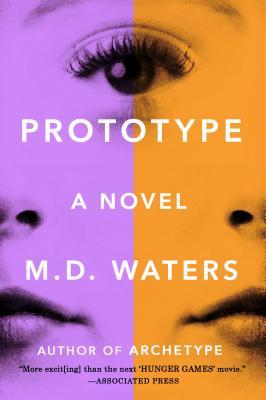“I want to laugh. Maybe Emma Burke would exit this room without a word, but I am not that woman any more.
Pulling free of Foster’s grip, I spin so fast Noah and Reid stop arguing to stare in bewildered silence.
‘You will not keep me here, Major Reid,’ I tell him, but shift my focus between both men in case Noah decides to join Reid’s crusade. ‘I dare you to try.’“
– Prototype, MD Waters
In the follow-up to the dystopian Archetype , Prototype by MD Waters finishes the story of Emma Wade-Burke, a woman on the run in a future version of the United States where fertile women are in scare supply, surveillance is everywhere, and a band of resistance fighters is gearing up for a war against the business elite who are keeping some serious secrets. Told from Emma’s first person present perspective, Archetype had a claustrophobic quality as Emma struggled to regain her memories within the prison of the hospital she awakens in and the home she shares with her husband Declan. Book two opens after Emma has discovered the truth about herself (spoilers after the cut) and the sinister role Declan has played in both her forgotten past and in society at large.
Continue reading “Blog Tour: a review of Prototype by MD Waters”











